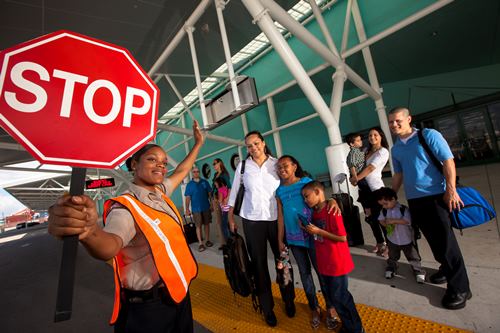
Consider this – A safety goal of 7:1. Meaning, for every one behavior that needs to be corrected, managers should recognize employees seven other times for positive safety measures. In the security industry, where safety is essential to completing job duties every day, safety culture best practices should be continually reinforced.
According to the Bureau of Labor Statistics, in 2012, almost 2 out of every 100 security officers reported needing medical treatment or time off work due to an injury on the job. When security professionals are injured and out of work, the safety and security of your workplace is impacted. But, companies that have implemented behavior-based safety programs see measurable improvements.
We know that safety in the workplace is a combination of three components: the person, their environment and their behavior. When these elements are addressed proactively, workplace incidents can be eliminated.
Behavior-based safety (BBS) is a process by which employees choose safe behaviors over unsafe ones. This behavior change does not happen by accident, but is targeted, communicated, observed and reinforced.
Security companies that have developed a BBS program can create goals, define the target behaviors, collect data and provide feedback. BBS is a bottom-up approach, starting with the frontline employees, with top-down support from safety leaders.
Behavioral Scientist Aubrey Daniels, author of “Safe By Accident? Take the Luck Out of Safety Leadership,” offers a clear understanding of how to influence workplace behaviors. Utilizing the ABC Model, you can assess behavior and help uncover the reasons why employees do or do not take part in unsafe behavior.
-
Antecedent – the person, place, event or thing that triggers a behavior
-
Behavior – the observable and measurable act
-
Consequences – events that follow behavior and influence the likelihood that they will recur in the future
In the security industry, behavioral safety is an important facet of a well-established safety culture, one that includes training, commitment, teamwork, and most importantly, communication. Is your security team contributing to your safety goals?
 About the Author
About the Author
Allied Universal Fire Life Safety Team









